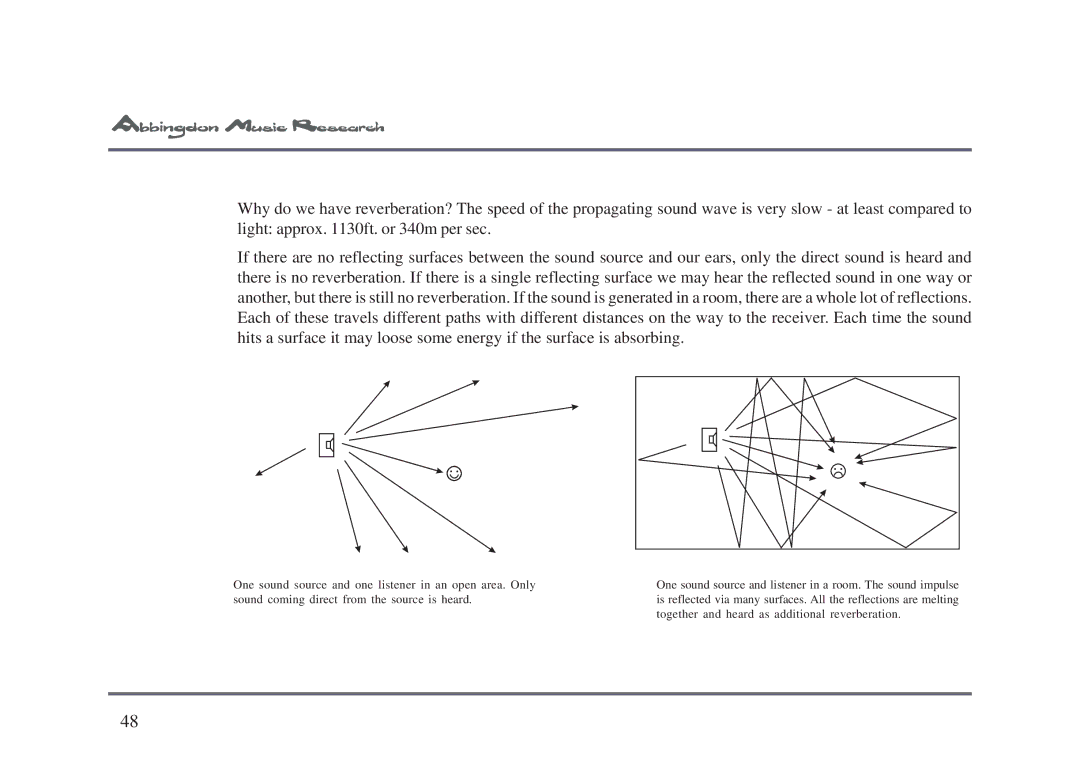
Why do we have reverberation? The speed of the propagating sound wave is very slow - at least compared to light: approx. 1130ft. or 340m per sec.
If there are no reflecting surfaces between the sound source and our ears, only the direct sound is heard and there is no reverberation. If there is a single reflecting surface we may hear the reflected sound in one way or another, but there is still no reverberation. If the sound is generated in a room, there are a whole lot of reflections. Each of these travels different paths with different distances on the way to the receiver. Each time the sound hits a surface it may loose some energy if the surface is absorbing.
One sound source and one listener in an open area. Only sound coming direct from the source is heard.
One sound source and listener in a room. The sound impulse is reflected via many surfaces. All the reflections are melting together and heard as additional reverberation.
48
